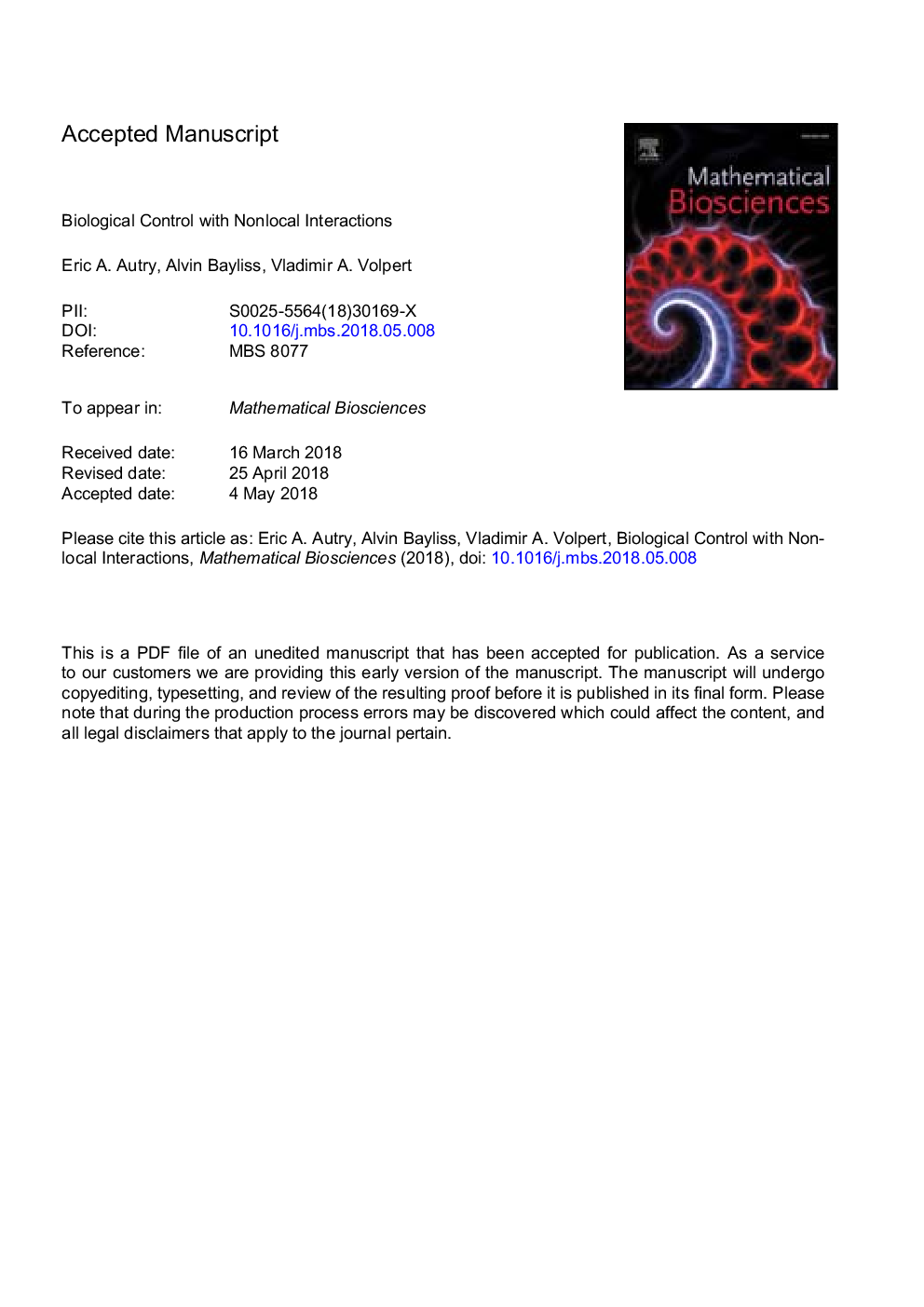| Article ID | Journal | Published Year | Pages | File Type |
|---|---|---|---|---|
| 8876999 | Mathematical Biosciences | 2018 | 23 Pages |
Abstract
In this paper, we consider a three-species food chain model with ratio-dependent predation, where species u is preyed upon by species v, which in turn is preyed upon by species w. Our primary focus is on biological control, where the bottom species u is an important crop, and v is a pest that has infested the crop. The superpredator w is introduced into this pest-infested environment in an attempt to restore the system to a pest-free state. We assume that the species can behave nonlocally, where individuals will interact over a distance, and incorporate this nonlocality into the model. For this model, we consider two types of nonlocality: one where the crop species u competes nonlocally with itself, and the other where the superpredator w is assumed to be highly mobile and therefore preys upon the pest v in a nonlocal fashion. We examine how biological control can prove to be highly susceptible to noise, and can fail outright if the pest species is highly diffusive. We show, however, that control can be restored if the superpredator is sufficiently diffusive, and that robust partial control can occur if the superpredator behaves nonlocally. Since the superpredator is generally introduced artificially, our results point to properties of the superpredator which can lead to successful control.
Related Topics
Life Sciences
Agricultural and Biological Sciences
Agricultural and Biological Sciences (General)
Authors
Eric A. Autry, Alvin Bayliss, Vladimir A. Volpert,
